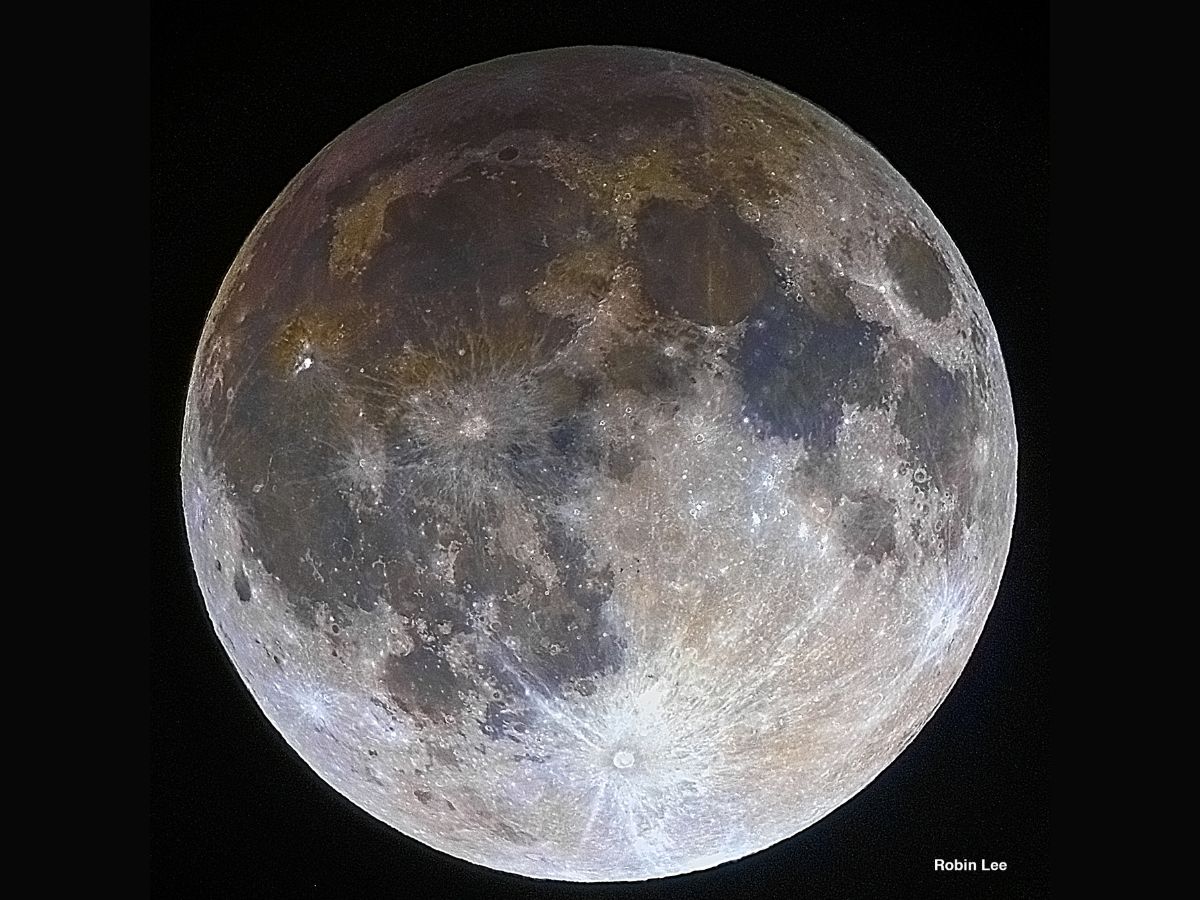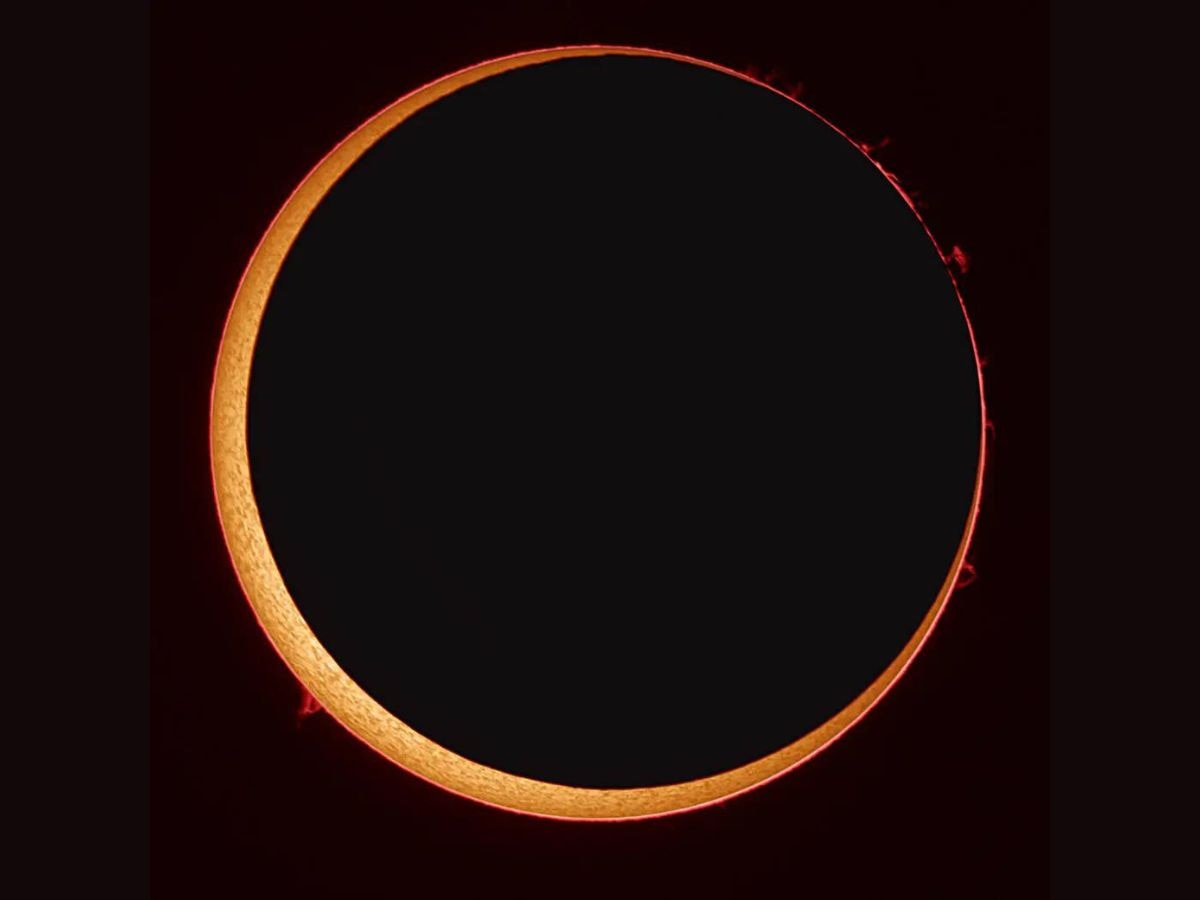[ad_1]
Eclipse Calendar 2024: The year 2024 will have a total of five eclipses. Of these, two are solar eclipses, and three are lunar. One of the lunar eclipses will be an “almost lunar eclipse”, which means that the Sun, the Earth, and the Moon will be very closely aligned, but there will be no lunar eclipse because the penumbra, or the lighter outer part of the Earth’s shadow, will just miss the Moon.
This is different from an almost total lunar eclipse, in which the Sun, the Earth, and the Moon align in such a way that up to 99.1 per cent of the Moon’s disk is within the darkest, inner part of Earth’s shadow, or the umbra, unlike a total lunar eclipse, in which the entire Moon falls within the umbra.
The following is the list of eclipses in 2024, when and where they will occur, and what they mean.
Penumbral Lunar Eclipse 2024

The first eclipse of the year is a penumbral lunar eclipse. It will occur anytime between March 24 to 25.
According to timeanddate.com, several regions of Europe, Australia, Africa, North America, South America, northeast Asia, the Pacific, the Atlantic, the Arctic, and Antarctica will witness the penumbral lunar eclipse. It will pass over Mexico, the United States, and Canada.
The eclipse will not be visible in India. A penumbral lunar eclipse is one in which the Moon travels through Earth’s penumbra. The Moon is usually dim during a penumbral lunar eclipse. Also, the Moon just misses the Earth’s umbra. This type of eclipse occurs when the Sun, the Earth, and the Moon are imperfectly aligned, and some of the Sun’s light is blocked by the Earth from directly reaching the Moon’s surface.
ALSO READ | The Science Of Health: Treatments For Physical Effects Of Stroke, And What Causes These Conditions
Since the Moon is not located exactly opposite to the Sun, the former comes inside the Earth’s penumbra. Had the Moon been located exactly opposite to the Sun, a total umbral eclipse, in which the Moon is immersed in the darkest part of Earth’s inner shadow, would have occurred.
Total Solar Eclipse 2024

The first solar eclipse of 2024, and the second eclipse of the year will occur on April 8. People living in regions such as North America, the Pacific, the Atlantic, the Arctic, western Europe, and northern South America will be able to witness the eclipse. The total solar eclipse will not be visible in India.
When the New Moon comes between the Sun and the Earth, and casts the darkest part of its shadow, or umbra, on the planet. The face of the Sun is completely blocked from the Earth. During a total solar eclipse, the Sun’s outer atmosphere, or corona, becomes visible, but one must not look at the Sun directly at the time of totality, or when the Moon completely covers the bright face of the Sun, because this can cause severe eye injury. People should wear specialised eye protection while viewing a total solar eclipse, and use a telescope with a special-purpose solar filter.
Only regions located in the path of the Moon’s umbra can see a total solar eclipse. People living outside the umbra’s path can see a partial solar eclipse, wherein the Moon blocks only a part of the Sun.
A total solar eclipse takes place in five stages: beginning of partial solar eclipse (first contact); beginning of total solar eclipse (second contact); totality and maximum eclipse; end of total eclipse (third contact); and end of partial eclipse (fourth contact).
In the first contact phase, the Moon becomes visible over the Sun’s disk.
MUST READ | XPoSAT: How ISRO’s Black Hole Mission Will Script A ‘POEM’ In Space, And Why It Is Special
During the second contact phase, the Moon starts covering the entire disk of the Sun, with some observers in the Moon’s umbral path seeing the diamond ring effect.
The totality and maximum stage is the one in which the Moon completely covers the disk of the Sun, with only the Sun’s corona being visible, as a result of which the sky goes dark, and temperatures drop. The midpoint of the time of totality of a solar eclipse is known as the maximum point of the eclipse.
The third contact phase is the one in which the Moon starts to move away, and the Sun reappears.
When the Moon leaves the Sun’s disk, the partial eclipse ends.
ALSO READ | What Is XPoSAT? First-Of-Its-Kind ISRO Mission That Will Study Black Holes, Neutron Stars And More
Partial Lunar Eclipse 2024

The second lunar eclipse of 2024, and the third eclipse of the year, is a partial lunar eclipse. The eclipse will be visible in the skies from September 17 to 18.
It will be seen in Europe, Africa, North America, South America, parts of Asia, the Pacific, the Atlantic, the Indian Ocean, the Arctic, and Antarctica.
However, the eclipse will not be visible in India.
A partial lunar eclipse is one in which the Sun, the Earth, and the Moon are imperfectly aligned, and the Moon passes through only a part of Earth’s umbra, the darkest, inner part of the planet’s shadow. The shadow grows over the Moon, but eventually recedes. It never entirely covers the Moon.
ALSO READ | Why Astronauts Aboard International Space Station Can Celebrate New Year’s Day 16 Times
Therefore, the difference between a total lunar eclipse and a partial lunar eclipse is that in the former, the Moon and the Sun are on the opposite sides of Earth, as a result of which the entire Moon falls within Earth’s umbra, and the Earth casts a complete shadow on the Moon, making the natural satellite appear reddish, and in the latter, only a part of Earth’s umbra covers the Moon.
When the Moon passes through Earth’s shadow, a lunar eclipse occurs, and when the Earth passes through the Moon’s shadow, a solar eclipse occurs.
Annular Solar Eclipse 2024

The second solar eclipse of 2024, and the fourth eclipse of the year is an annular solar eclipse, also known as a ‘ring of fire’ solar eclipse. The annular solar eclipse will occur on October 2, 2024, and will be visible in southern parts of North America, several regions of South America, the Pacific, the Atlantic, and Antarctica.
It will not be visible in India.
An annular solar eclipse is one in which the Moon is far away from the Earth, as a result of which the Earth’s only natural satellite appears smaller than the Sun in the sky. The reason why the Moon appears smaller than the Sun in the sky during an annular solar eclipse is that the Earth’s only natural satellite is located at its farthest point from Earth, also called apogee.
When the Moon comes in front of the Sun at or near apogee, the lunar umbral shadow, or the dark, inner part of the Moon’s shadow, does not reach Earth. As a result the Moon does not completely block the view of the Sun, but appears like a dark disk on top of a brighter and larger disk.
ALSO READ | Genetic Mutations That Promote Reproduction Early In Life Contribute To Ageing, Shorten Lifespan: Study
The Moon casts only its antumbra on the Earth, which refers to the part of the Moon’s shadow extending from the end of the umbra.
Therefore, during an annular solar eclipse, the Moon comes between the Sun and the Earth, is located at the farthest point in its orbit around the Earth, and the edge of the Sun remains visible as a bright ring around the Moon.
The different phases of an annular solar eclipse are: partial eclipse, annularity, return to partial eclipse, and end of partial eclipse.
Partial eclipse
The partial eclipse phase is the one in which the Moon begins to pass in front of the Sun, and slowly starts blocking more and more of the Sun’s light. This makes the Sun appear smaller and smaller. The Sun becomes crescent-shaped, and ultimately forms a “C” shape. This stage is called the first contact phase.
Annularity
The annularity phase begins about an hour and 20 minutes after the partial eclipse starts. During the annularity phase, the Moon passes completely in front of the Sun, forming a bright “ring”. This phase is also known as the second contact phase. For most places, it lasts for one to 5 minutes. The sky becomes dimmer during an annular solar eclipse, but not as dim as during a total solar eclipse. About 90 per cent of the Sun will be covered by the Moon.
ALSO READ | Zombie Deer Disease Found In Many US Animals, Scientists Worried Of Potential Spread To Humans. Here’s Why
Return to partial eclipse
After the second contact phase, the Moon continues passing across the face of the Sun for about an hour and 20 minutes. This produces another partial eclipse phase, and is known as the third contact stage.
End of partial eclipse
The Moon keeps moving away from the Sun until it no longer overlaps the star’s disk. This marks the end of the eclipse, and is known as the fourth contact phase.
Almost Lunar Eclipse 2024
The fifth and final eclipse of 2024 is an almost lunar eclipse. This event will not be visible from any region on Earth because the planet’s shadow just misses the Moon.
It will occur on October 17.
ALSO READ | Generative AI Can Complement Aadhaar, UPI To Make It Safer, More Efficient. Experts Explain How
[ad_2]
Source link